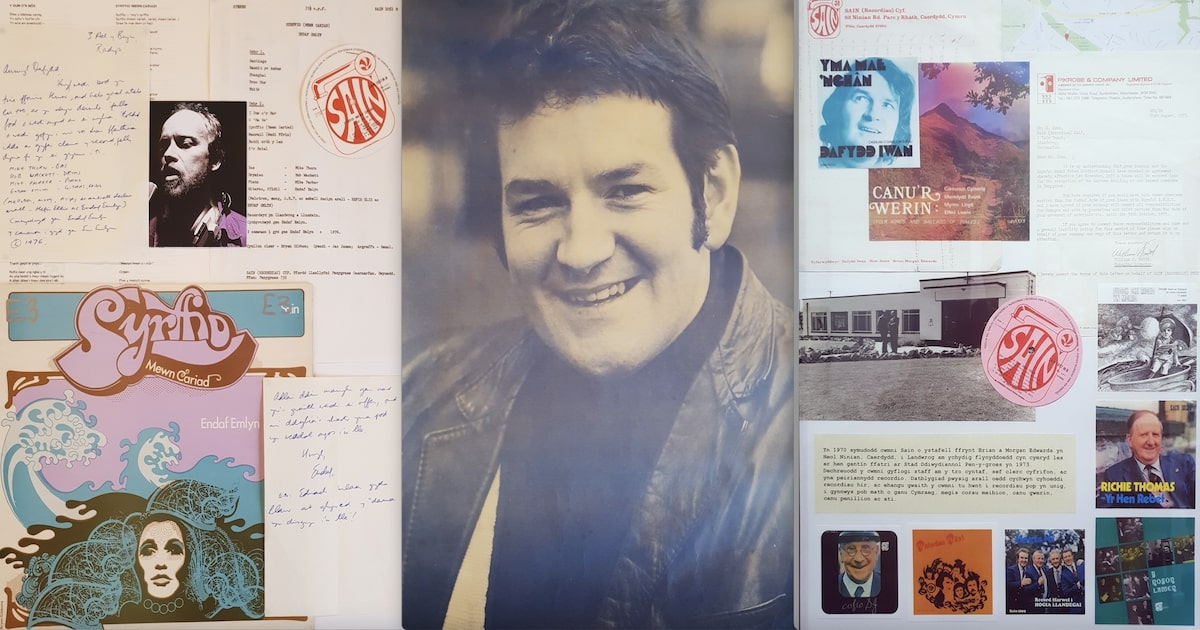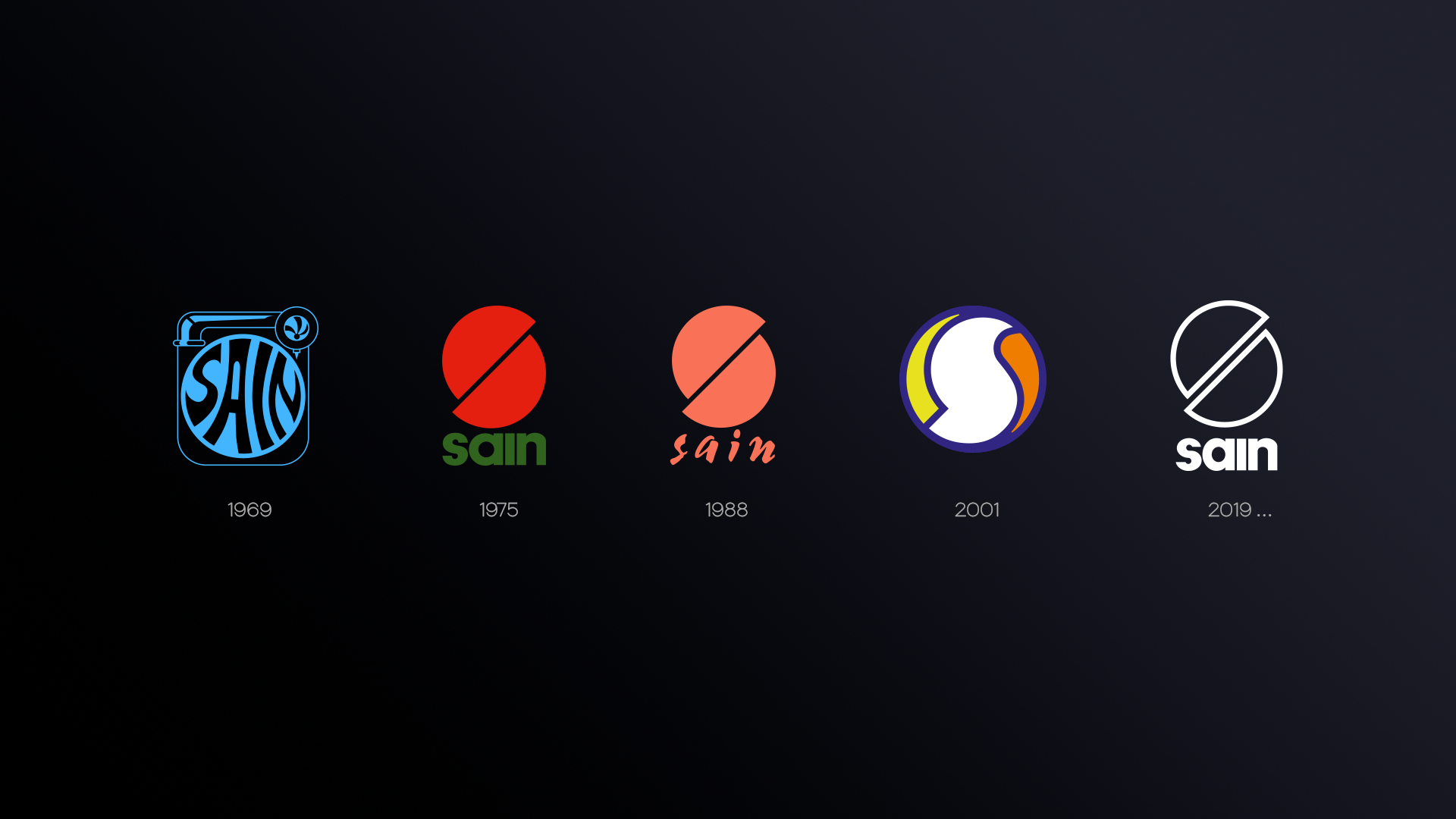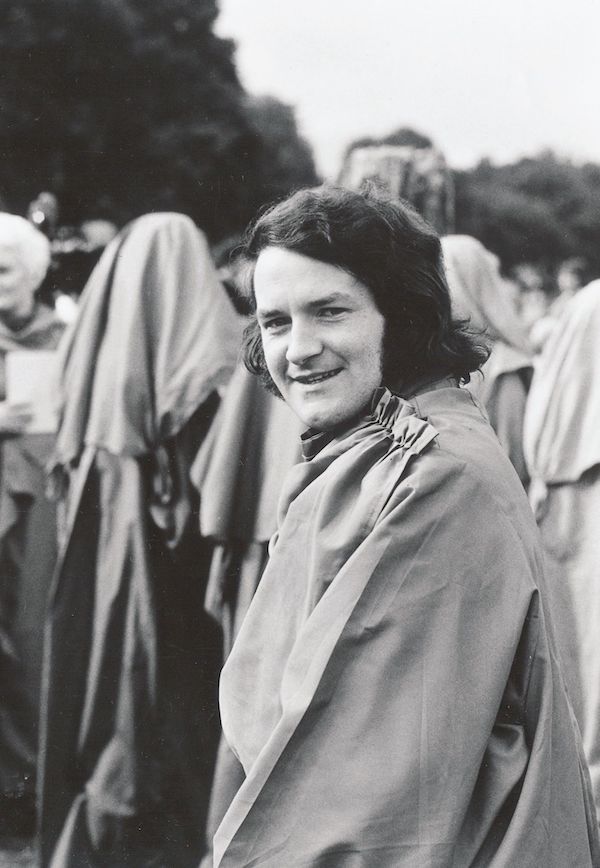Welsh label to digitise entire catalogue of 26,000 recordings

Iconic Welsh label Sain Records is to digitise its whole archive which it hopes will spark a new age of Welsh music.
Music from the oldest independent record label in Wales is being preserved for future generations – thanks to an epic digitisation of its entire back catalogue and the reimagining of its original studio space for the local community.
Llandwrog-based Sain Records, co-founded by Welsh language protest singer Dafydd Iwan in 1969, has received funding to archive its 2000-plus releases digitally – accounting for aeround 26,000 songs. The first 140 singles alongside albums and EPs spanning over five decades of political protest music, pop, hip hop, classical and folk are now available to stream or download on commercial platforms.
Much of the music was recorded at Canolfan Sain on the outskirts of Caernarfon and work is underway to introduce co-working and community spaces alongside the existing recording studios by early 2025.
The move by Sain – which is the Welsh word for ‘audio’ or ‘sound’ – means that new Welsh artists will have access to the label’s unique catalogue of music for the first time digitally in its entirety. Collaboration and new recordings have already been inspired, including a deep dive into the Sain archive on a forthcoming new beat tape album by Cardiff-based producer and artist, Don Leisure.

Sain is also collaborating with other emerging brands and creatives in Wales, utilising the space and studios in Llandwrog with the aim of broadening opportunities for new artists in Wales and fostering innovation and growth within the local creative community.
The National Library of Wales will provide expert advice and support to Sain on the archiving process to ensure the whole archive is preserved digitally in the most accessible formats possible. The IP of the recordings will remain with the current rights holders. Both parties are also exploring the opportunity to expand this project into a comprehensive archive for Welsh music labels, giving audiences the chance to discover both new and historic Welsh music.
Funding for the project was provided from the ARFOR challenge fund; a joint venture by Carmarthenshire, Ceredigion, Gwynedd and Anglesey Councils funded by Welsh Government, which seeks to use entrepreneurship and economic development to support the heartlands of the Welsh language and, thus, maintain the language.
The label’s archive includes some of the most important Welsh language music recorded in the last 50 years and is synonymous with Welsh language political struggles and culture. Its first single, in 1969, was Huw Jones’ “Dŵr” (Water) a protest song about the flooding of the Tryweryn Valley near Bala to provide water to the city of Liverpool.

Sain’s co-founder, Dafydd Iwan, is a Welsh language folk singer whose music has seen a cultural resurgence in recent years with his 1983 song Yma o Hyd (We’re Still Here) becoming a huge anthem for Wales football fans.
Set up in the Welsh capital, many of Sain’s early releases were recorded at Rockfield Studios in Monmouthshire, but in the early 1970s the record company moved to the Caernarfon area and opened their first recording studio in 1974 near Llandwrog. Artists who have recorded with the label include indie favourites Catatonia, cult psych-folk musician Meic Stevens, influential poet and musician Geraint Jarman, international classical and opera star, Bryn Terfel, former royal harpist and composer Catrin Finch and leading 70s bilingual folk singer Heather Jones. Alongside the digital archiving, a vinyl reissue series is also under way with Jones’ 1974 album Mae’r Olwyn yn Troi available for pre-order.
Dafydd Iwan said: “If we at Sain have learned anything during the last 55 years, it is that the world of music and the recording industry is constantly changing and evolving, and all of us involved have to move with it or be left behind. The raw material is always available, and Wales is a rich breeding ground for new talent and exciting creativity. This project will allow us not only to reflect that new talent, but also to ensure that the musical output of the last half century will be available and accessible for future generations.”

Rhodri Llwyd Morgan, Chief Executive, The National Library of Wales said: “The Sain catalogue is one of our nation’s most important music archives, chronicling Welsh cultural expression for over half a century. It has been our privilege to collaborate with this groundbreaking company by offering the expertise of our archival and digitisation staff, and to play a part in the development of the project.
We look forward to building on this relationship in order that people can have access and use of archives like this across Wales.”
Four tracks from the Sain back catalogue to explore:

Tacsi I’r Tywyllwch, Geraint Jarman, 1977
Jarman is an influential poet and musician described by fellow musician, composer and former Super Furry Animals frontman, Gruff Rhys as ‘serving as a bridge to a new wave of post punk Welsh language artists in the 1980s and beyond who had a less self-conscious relationship with their Welsh identity’. Tacsi I’r Tywyllwch (Taxi into Darkness) is one of his earlier releases and is the album title track.
Gormod i’w Golli – Rhiannon Tomos, 1980
Gormod i’w Golli (Too Much to Lose) is an early single by female Welsh rock/metal singer Rhiannon Tomos. She was one of the first women to become a lead singer of a rock band, going on to front Welsh heavy metal band Y Diawled (The Devil), replacing Kevin Davies.
Dŵr, Huw Jones 1969
The first single from the Sain label, Dŵr (water) is a protest song about Tryweryn and the traditional Welsh-speaking village of Capel Celyn where residents were forced to leave and the village drowned to create a reservoir to provide water for Liverpool in 1965. Tryweryn has since become a by-word for Welsh language struggle. Dŵr describes the feelings of a Welshman returning to the valley of his childhood, only to find his people had been expelled and the valley flooded to make a reservoir to supply water to English cities.
Gyda Gwen, Catatonia, 1993
Gyda Gwen (With a Smile) was first featured as a track on the For Tinkerbell EP released in 1993 through Sain imprint Crai. The band became chart favourites in the late 90s with their English language hits Mulder and Scully; Road Rage and bilingual album title track International Velvet.
Support our Nation today
For the price of a cup of coffee a month you can help us create an independent, not-for-profit, national news service for the people of Wales, by the people of Wales.





That’s amazing!
I wish S4C would digitise some of its old programmes too – there is so much this generation would get out of so many of the old school cartoons for example.
Diar annwyl! Dafydd mewn protest! Dyna mwy neu lai yr unig dro na fu’n protestio! Cael ei dderbyn i’r Orsedd oedd o!!